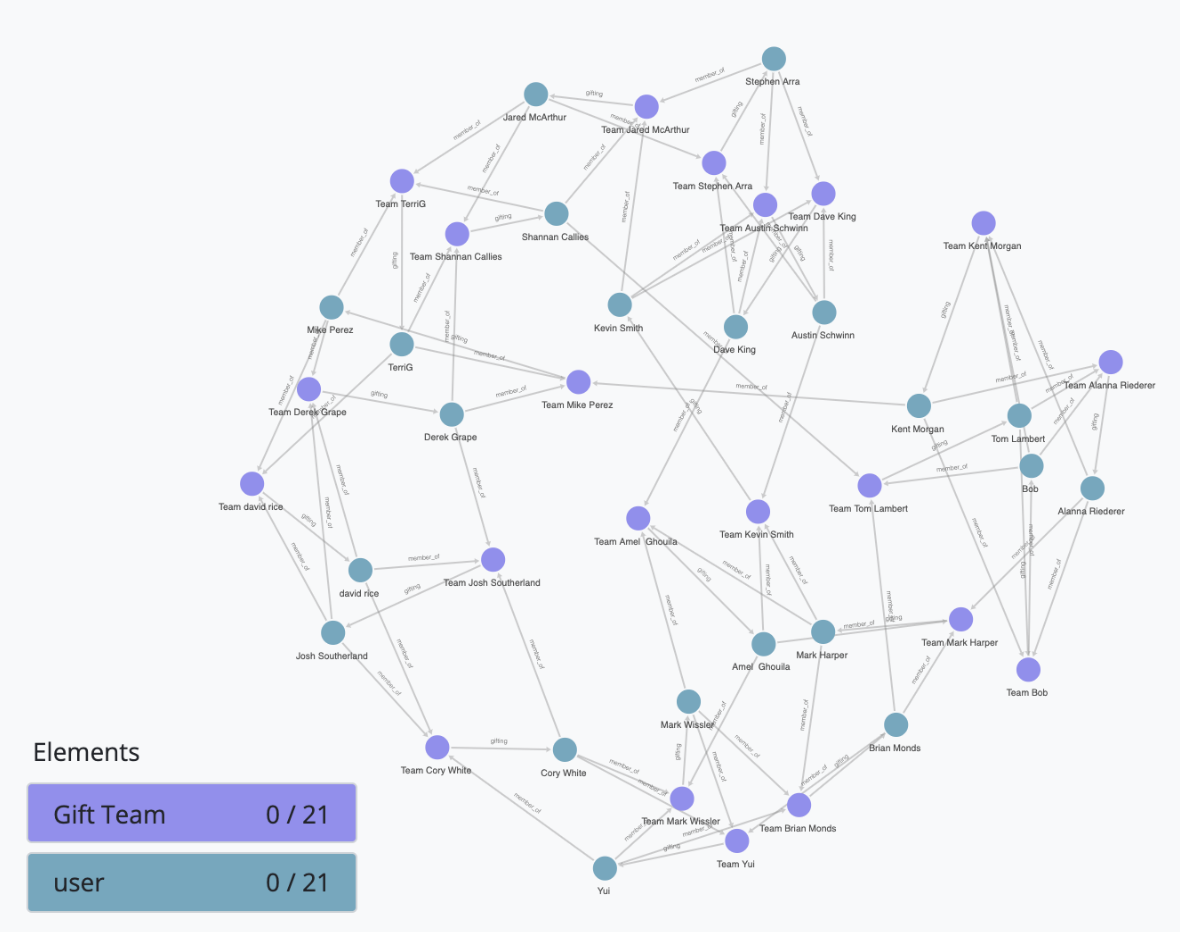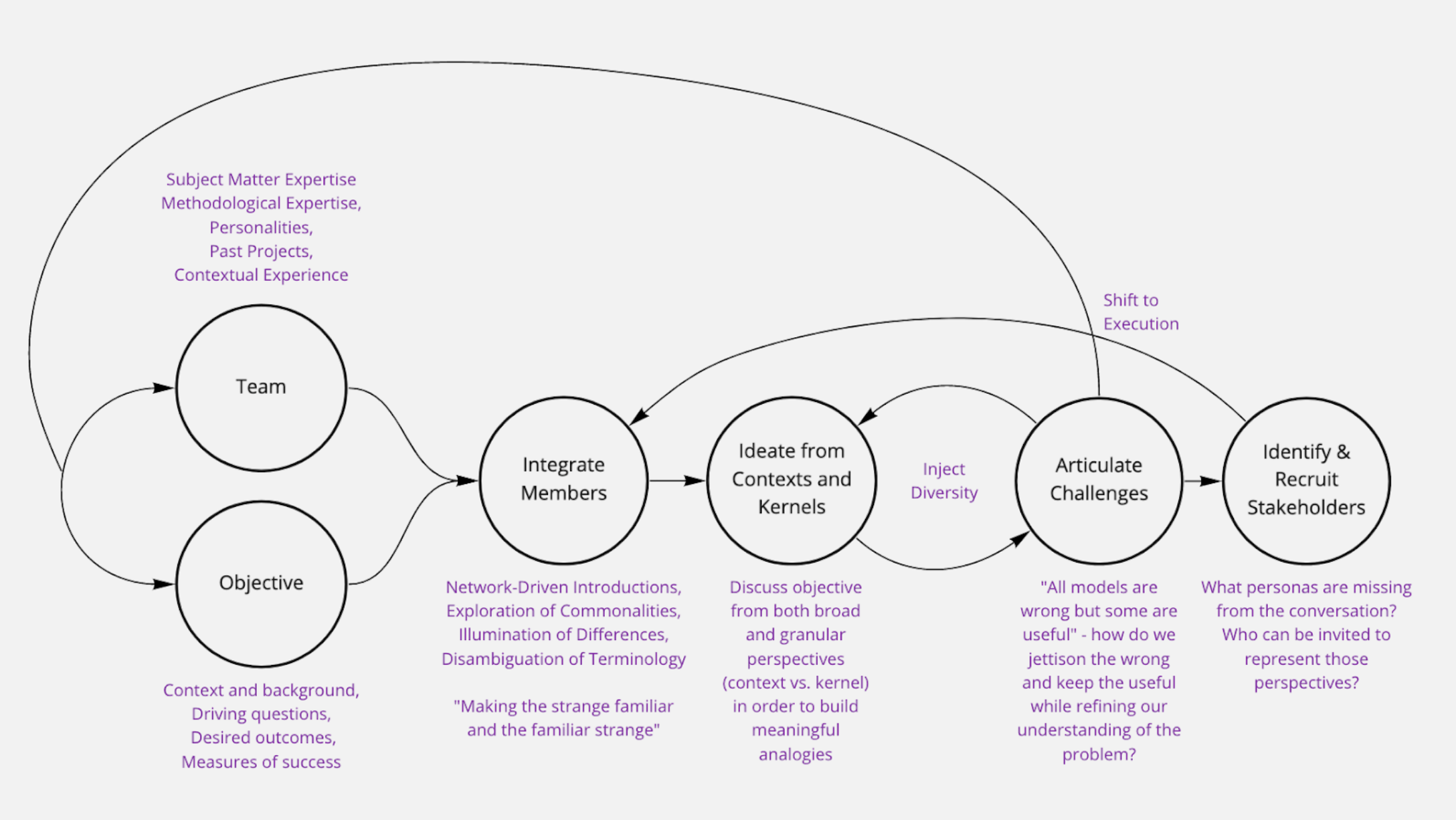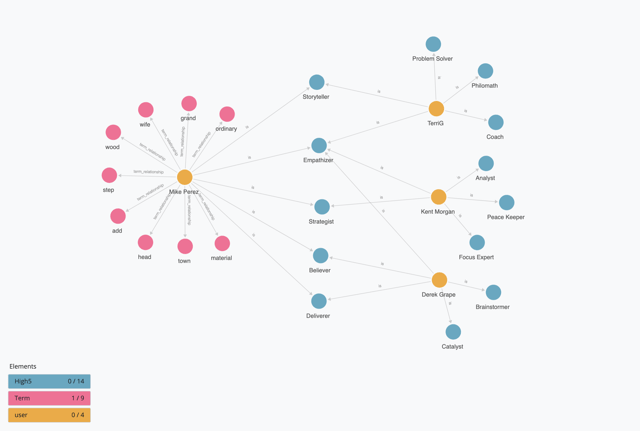You can find all sorts of “how to” treatises on assembling a team built for innovation, and they all include some subset of the following concepts - bring in experts, make sure they are diverse, have wide-ranging skillsets and have them be people who aren’t afraid to buck the system or go against the flow. Then don’t distract them with mundane tasks and give them enough time and money to actually accomplish their innovation mandate.
Sure, that is one way to create an environment that might result in innovative ideas, but who has the time and resources to assemble such a dream team? What if you just have the team you’ve got? Do you just resign yourself to good, maybe great but not “innovative” ideas?
Innovation as a practice
Creating an environment that fosters innovation is a practice that can be facilitated at first, and then can become a part of your work repertoire. To demonstrate this, we practiced with our company in our annual birthday week hackathon. Yes, as a small software development company, we get together on the anniversary of our company’s birth, and we hack. This year’s event was in the midst of the COVID-19 pandemic and the idea of purchasing innovative gifts for each other was hatched to provide some comfort and team building in the midst of the chaos of 2020. The plan was to have a team whose only purpose was to purchase an innovative gift for a co-worker.
The Set Up
With 21 people to purchase gifts for, we created 21 teams of 3 and each person was a part of 3 gift-giving teams. We had 3 days to meet and decide on a gift for every person, and the final day was the gift reveal. While we had sophisticated software and dedicated machine learning people to create the teams, the teams still had ideological bubbles that tended to rehash old ideas. This was not an ideal starting point, but it bodes well for your already assembled teams.

Although simple enough - buy a gift for your co-worker that makes them feel better - even this level of problem can suppress the ideation process. To mitigate that, we needed to seed the conversations with pertinent information, from both the team ideating and the gift receiver. Each person entered text (at least 5000 words) from some of their favorite things: a book(s), a song(s) and an activity. We had also all taken a personality test to find characteristics that are easy to draw similarities and differences from. There are many personality tests out there, we just happen to have chosen the HIGH5 Test. Armed with the people, the task and seeded with intimate knowledge of each other, we began the process for facilitated innovation.
The Process

Each discussion started with the obvious dive into what we knew about the topic – in this case, which book, what song, what activity? Do I like these things? Do I even know what these things are? This grounded the team in the background knowledge needed to ultimately solve the objective – what do we get them to make them feel better? You can’t skip understanding the basics. In the diagram this is illustrated by the taking the Team, the Objective and Integrating the Members.
It turns out, in every innovative conversation I’ve been in, the most intriguing ideas are generated once the team has integrated the basic objective as well as the individual roles they play in exploring how to solve the objective. Now we begin to ideate.

I was part of Team Mike along with Kent and Derek. Our ideation session to find an innovative gift for Mike began with using our varied perspectives, specifically using our shared personality traits to glean new information from the snippets of what Mike had shared from his favorite things.
For example, I am new to the company and I had never personally worked with Mike before and had little to no experience of him on a day to day level. However, Mike and I share the traits “empathizer” and “storyteller”. Coming from what I know and experience from these traits I share in common with Mike and latching onto the word “ordinary” scraped from Mike’s submission, I introduced the idea of epic extraordinary journeys. We explored the concept of epic extraordinary journey through Derek and Mike’s shared context of “believer” and “deliverer”, and the idea of truing oneself up was invoked. Mike’s activity of woodcarving led us to imagine an appreciation of craftsmanship. Each of these sparks of an idea led to exploring nautical devices we could purchase on the web. This may not seem like an obvious path to you, but that is the beauty of a facilitated conversation, it’s direction is determined by those involved. The gift we landed on for Mike turned out to be a vintage brass sundial and compass. Note once we had decided on the gift we handed off purchasing the gift to another team as implementation is not always also handled by the ideating team.

Another way to break down or describe this process is that each member of the team brings all of themselves to the conversation, their methodologies for solving problems, the things they love to do and think about, all their varied experiences and knowledge. If the team then follows the train of thought that begins with the objective you are trying to solve and allows each of their brains to do what brains do naturally, connections will be made that allow for new thoughts and ideas to emerge.
What about when you get stuck or don’t land on an obvious solution? The diagram reflects ways in which you can inject diversity or bring in the correct stakeholders if you find the necessary people aren’t being included in the conversation. That is going to happen, and it did for several of the teams during this exercise, possibly due to the teams having more similarities than differences. Bringing in another person – a facilitator - with their distinct methodologies and likes and knowledge can kick-start the conversation. A facilitator’s role is really to ask questions that have the team members view their objective through distinct contexts or lenses and encourage the conversation to follow the network of connections that only arise when that group of brains convene. Another way to think about this is to let your ideas incubate with other people’s ideas. Steven Johnson has a TED talk – Where good ideas come from – in which he says that “chance favors the connected mind”, a facilitated conversation like the one described here leverages several minds to accomplish the same thing.
Sometimes you may arrive at an impasse that requires bringing in other stakeholders such as HR (Why you can’t gift teargas to your co-worker) or the beneficiaries of the solution you are trying to implement (i.e. Challenges in controlling the ebola outbreak were worsened by ignorance of local culture and customs) or challenges that may arise from the solution. Introducing these new contexts or stakeholders can seed a new round of innovative conversations and ideations.
The Results
How did our birthday week experiment turn out? It turns out this kind of conversation is in itself a great team-building exercise. A result of these conversations was that the newest members of the team (some of whom had never met their co-workers in real life, thanks COVID) had the experience of being included and welcomed into the company culture. People who had been working together for years learned things about their team-mates they had never known. Sometimes the technology failed, i.e. the algorithms pulled out erroneous information or the participants tried to confuse the system #whennerdscongregate, and yet the exercise was a success anyway:
And some of the gifts were truly innovative and moved the recipient to tears.
Want to practice this without having fancy software and a problem already on hand to solve? Try out this exercise that only requires ideas and stickies.

Comments